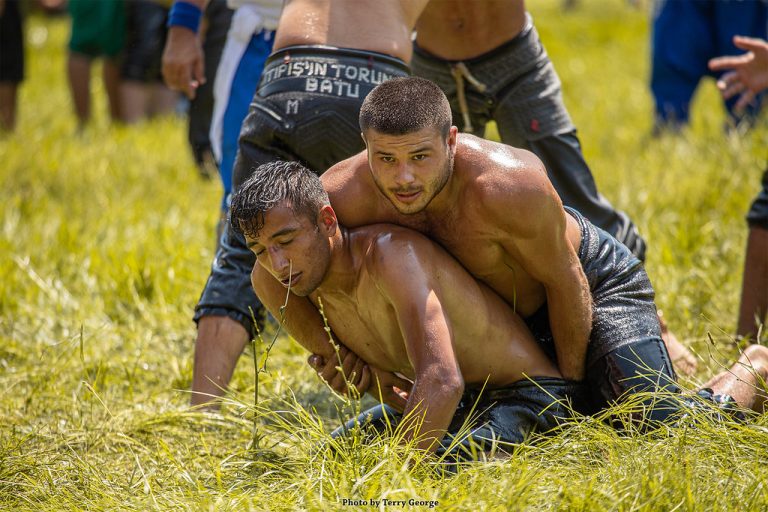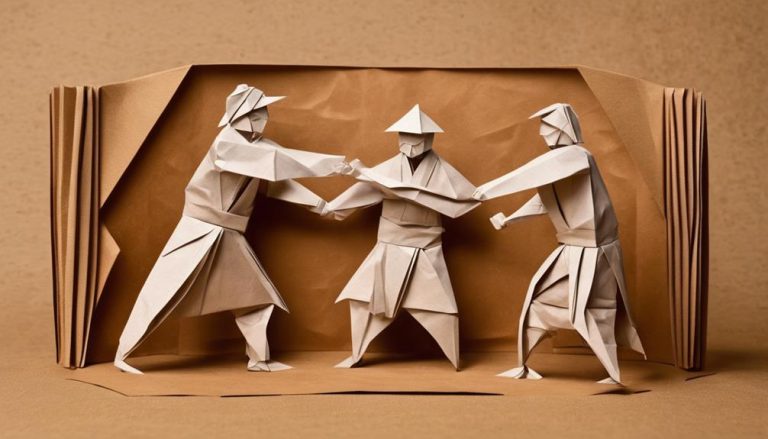General Rules of Okinawan Kobudo
Did you know that in Okinawan Kobudo, there are specific rules and guidelines that practitioners adhere to for centuries? From the origins steeped in tradition to the intricate code of conduct followed during training sessions, each aspect plays a vital role in shaping a disciplined martial artist. As you explore the various training principles and weapon handling etiquette, you'll uncover a world where respect, discipline, and skill intertwine seamlessly. These rules not only govern physical techniques but also instill a sense of honor and respect that transcends mere combat practice.
Origins and History
Okinawan Kobudo traces its origins back to the ancient warrior traditions of the Okinawan people, blending martial arts techniques with the use of traditional weapons. This art form has deep roots in the history and culture of Okinawa, shaping it into a unique and powerful martial art. The ancient roots of Okinawan Kobudo can be seen in its connection to the Ryukyu Kingdom, where it was developed out of necessity due to strict weapon bans imposed by occupying forces. This led to the Okinawans mastering the use of everyday tools and farming implements as weapons, giving birth to the diverse array of Kobudo weaponry we see today.
Cultural influences have played a significant role in shaping Okinawan Kobudo into what it is today. The fusion of Chinese martial arts and indigenous Okinawan fighting styles brought about a rich tapestry of techniques and philosophies that continue to be passed down through generations. The respect for tradition and the emphasis on discipline and honor are deeply ingrained in the practice of Okinawan Kobudo, reflecting the values of the Okinawan people.
Understanding the ancient roots and cultural influences of Okinawan Kobudo is essential for practitioners seeking to explore deeper into this art form. By embracing the history and traditions that have shaped Okinawan Kobudo, one can truly appreciate the depth and significance of this martial art.
Code of Conduct
Tracing back to the ancient warrior traditions and cultural influences of Okinawan Kobudo, the Code of Conduct serves as a guiding principle for practitioners, embodying the values of discipline and honor in their martial arts practice. In the world of Okinawan Kobudo, respect and etiquette are paramount. It is essential to show respect not only towards one's instructors and fellow practitioners but also to the traditions and history of this martial art. By upholding proper etiquette, practitioners cultivate a sense of humility and mindfulness, which are vital for personal growth and development.
Moreover, the Code of Conduct emphasizes the importance of honor and tradition. Practitioners are encouraged to uphold the values of integrity, honesty, and loyalty both inside and outside the dojo. By honoring the traditions passed down through generations, practitioners connect with the rich history of Okinawan Kobudo and carry on the legacy of those who came before them. This deep respect for tradition fosters a sense of belonging and continuity within the martial arts community.
Training Principles
As you progress in your journey of Okinawan Kobudo, mastering the basics of training will serve as your foundation for growth and development. Your focus on techniques should be unwavering, honing each movement with precision and intent. Remember, discipline and consistency are your allies in achieving proficiency in this ancient art form.
Basics of Training
Utilize traditional training principles to establish a strong foundation in Okinawan Kobudo techniques. To excel in this martial art, focus on mastering the techniques through consistent practice. Repetition is key to ingraining the movements into your muscle memory, allowing for swift and precise execution in combat situations. Additionally, pay close attention to footwork during training sessions. Proper footwork is essential for maintaining balance, generating power, and swiftly maneuvering around opponents. Incorporate footwork drills into your training routine to enhance agility and coordination. By laying a solid groundwork in techniques and footwork, you pave the way for advanced skill development in Okinawan Kobudo. Stay dedicated to your practice, and you will find yourself progressing steadily towards mastery.
Focus on Techniques
To enhance your proficiency in Okinawan Kobudo, focus on refining your techniques through dedicated practice and attention to detail. Technique refinement is a key aspect of your training progress, requiring a deep understanding of each movement and its application. Here are some essential tips to help you elevate your skills:
- Precision: Pay close attention to the angle of your strikes and the positioning of your body.
- Speed and Power: Work on increasing the speed and power of your techniques without sacrificing accuracy.
- Seamless Shift: Focus on the seamless shift between different techniques for maximum effectiveness.
- Control: Master the control of your movements to execute techniques with finesse and accuracy.
Discipline and Consistency
Maintaining discipline and consistency in your training regimen is important for honing your skills in Okinawan Kobudo. Mental toughness plays a critical role in pushing past limits and overcoming challenges. It is this resilience that will allow you to endure the demanding training sessions and master the intricate techniques of Kobudo. Developing mental toughness involves staying focused, persevering through discomfort, and embracing the journey towards improvement. Additionally, physical endurance is essential for executing techniques with precision and power. Consistent training not only builds physical strength but also enhances muscle memory, allowing movements to become more fluid and natural over time. By committing to disciplined practice and staying consistent in your efforts, you pave the way for continuous growth and advancement in Okinawan Kobudo.
Weapon Handling Etiquette
When handling weapons in the practice of Okinawan Kobudo, it is important to demonstrate respect and mindfulness towards the tools of your craft. Proper grip and respectful movements are key aspects of weapon handling etiquette in Okinawan Kobudo. Here are some guidelines to help you embody this etiquette:
- Maintain a Firm Grip: Make sure your grip on the weapon is firm but not overly tense. This balance allows for control and fluidity in your movements.
- Handle with Care: Treat the weapon as an extension of yourself, showing care and attentiveness in every interaction. This mindset fosters a deeper connection to the weapon.
- Mindful Shifts: When shifting between different techniques or stances, do so with intention and awareness. Smooth shifts reflect mastery and respect for the weapon.
- Return to Rest: After practicing with the weapon, always return it to its designated place carefully. This action signifies the conclusion of training and reinforces discipline.
In Okinawan Kobudo, the way you handle your weapon reflects your dedication to the art and your respect for its traditions. By embodying proper grip and respectful movements, you not only honor the weapon but also cultivate a deeper understanding of yourself and your practice. Remember, every movement with the weapon is an opportunity for growth and connection in the world of Okinawan Kobudo.
Kata and Forms
When it comes to Okinawan Kobudo, the practice of Kata and Forms holds immense significance. These structured sequences of movements not only showcase the art's techniques but also provide practical applications for combat scenarios. Understanding the historical evolution of these Kata sheds light on the art's development and the cultural context in which it originated.
Importance of Kata
Understanding the significance of kata in Okinawan Kobudo is essential for mastering the art form with precision and authenticity. Kata serves as a fundamental aspect of training, providing numerous benefits such as enhancing muscle memory, promoting focus, and refining techniques. Through the practice of kata, practitioners can internalize the application techniques of various weapons, honing their skills for real-world scenarios. The intricate movements within kata sequences allow for the development of proper timing and coordination, vital for effective combat. Additionally, kata fosters a sense of tradition and discipline, connecting practitioners to the rich history of Okinawan Kobudo. Embrace the essence of kata, for it is the gateway to mastery and self-discovery in this ancient martial art.
Practical Applications Demonstrated
Exploring the practical applications demonstrated through kata and forms reveals the intricate nuances and combat effectiveness embedded within Okinawan Kobudo techniques. These traditional forms not only preserve the essence of the art but also serve as a practical guide for self-defense techniques. Each movement within a kata is designed to simulate real combat scenarios, teaching you how to respond swiftly and effectively to different attacks. By studying and practicing these forms diligently, you can internalize the strategies and techniques required to defend yourself in various situations. The repetition and precision required in kata training help ingrain muscle memory, ensuring that when faced with a threat, your body instinctively reacts with the appropriate defensive maneuvers, showcasing the combat effectiveness of Okinawan Kobudo.
Historical Significance and Evolution
Delving into the historical significance and evolution of Okinawan Kobudo kata and forms provides a profound insight into the art's development over time. The evolution of these traditional practices has been shaped by a myriad of influences, ranging from cultural exchanges to wartime necessities. Some key points to contemplate in this exploration include:
- Blending of Techniques: Witness the amalgamation of indigenous Okinawan fighting methods with Chinese martial arts, resulting in a unique and versatile combat style.
- Adaptation to Weaponry**: Experience how the art adapted to incorporate various traditional Okinawan weapons such as the bo staff, sai, tonfa, and nunchaku.
- Transmission through Generations: Trace the lineage of knowledge as masters passed down the intricacies of kata and forms to their disciples.
- Modern Innovations: Explore how contemporary practitioners continue to innovate and evolve the art while staying true to** its roots.
Sparring Guidelines
When engaging in sparring within the domain of Okinawan Kobudo, following the specified guidelines not only guarantees safety but also fosters the development of essential skills and techniques. Sparring techniques in Okinawan Kobudo are deeply rooted in tradition, emphasizing respect, control, and discipline. Safety measures are paramount to make sure that practitioners can hone their skills effectively without unnecessary risks. The guidelines below serve as a framework for meaningful and progressive sparring sessions:
| Guideline | Description | Purpose |
|---|---|---|
| Controlled Strikes | Execute strikes with control to avoid causing harm to your sparring partner. | Develop precision and accuracy in your techniques. |
| Proper Protective Gear | Always wear appropriate protective gear such as helmets, gloves, and padding. | Make sure the safety of both participants during bouts. |
| Respect and Etiquette | Bow before and after sparring, showing respect for your partner and the art. | Cultivate a harmonious and respectful training environment. |
| Communication | Communicate openly with your partner about intensity and techniques beforehand. | Enhance understanding and promote safe sparring practices. |
Frequently Asked Questions
What Are Some Common Mistakes Beginners Make When Learning Okinawan Kobudo?
When starting Okinawan Kobudo, common mistakes include rushing proper techniques, neglecting basics, and lacking patience. Remember, slow and steady wins the race. Focus on fundamentals, seek guidance, and practice consistently for mastery.
Are There Any Specific Dietary or Fitness Recommendations for Practitioners of Okinawan Kobudo?
When practicing Okinawan Kobudo, your fitness routines should include strength training and cardio for endurance. Balanced dietary plans rich in lean proteins and complex carbs support your training. Stay disciplined to enhance your martial arts journey.
How Can One Best Maintain and Care for Their Kobudo Weapons?
To maintain your kobudo weapons, it's essential to clean them regularly to prevent rust and damage. Proper maintenance includes oiling metal parts, storing them in a dry place, and avoiding direct sunlight to preserve their integrity.
Are There Any Specific Ways in Which Okinawan Kobudo Can Be Adapted for Self-Defense in Modern Times?
When adapting Okinawan Kobudo for self-defense in modern times, consider modern applications and techniques. Develop training drills and scenarios that simulate real-life situations. By incorporating these elements, you can enhance your skills effectively.
What Are Some Recommended Resources for Further Learning About Okinawan Kobudo Beyond Basic Training?
For delving deeper into Okinawan Kobudo beyond basics, explore online resources for historical context and techniques. Attend workshops for hands-on learning. These avenues offer rich insights and practical skills to enhance your mastery.






